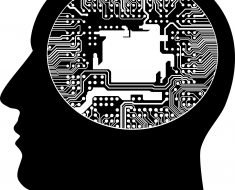Dementia is an age-related disease that is becoming ever more prevalent as demographics change. It affects primarily people over the age of 80, with this group accounting for more than 70 percent of all dementia sufferers. Caring for these patients is an enormous challenge for their families and caregivers, especially since, in most cases, key health data lacks any useful structure and is not available when it is needed. It is hoped that a miniaturized, modular measurement and advisory system being developed in a joint project that includes Fraunhofer researchers will soon ease this situation. The system uses inconspicuous sensors to automatically measure dementia patients’ health and care data and suggests personalized treatment options based on their current condition.
There are nearly 1.6 million dementia patients in Germany today, two-thirds of whom suffer from Alzheimer’s disease. Each year, around 300,000 new cases are diagnosed. Dementia develops slowly, which often makes it difficult to recognize the disease or to distinguish it from other changes that normally occur as we age. Those affected become increasingly helpless and must rely on care. Diagnosing the disease as early as possible means better care for the patient and greater scope for influencing the progression of the disease.
An early warning system provides greater security in patient care
Currently, however, documentation of patient care data lacks any useful structure, so important information that could trigger preventive measures is frequently not available when it is needed. Scientists at the Fraunhofer Institute for Reliability and Microintegration IZM in Berlin, in collaboration with partners from industry and research, thus launched the PYRAMID project (see box) to develop a new care approach aimed at stabilizing and improving the quality of life of people with dementia and their families and, working closely with caregivers and doctors, offering greater patient security: a miniaturized, modular measurement and advisory system in the form of a wristband automatically measures the requisite health and care data of the dementia patient with inconspicuous, barely perceptible sensors. Based on the data it collects, it then suggests and implements personalized treatment and care options for the patient. Erik Jung, a physicist at the Fraunhofer IZM, explains the approach: “The goal is to discreetly accompany patients over the course of years, from the first tentative diagnosis through to clinical treatment, to put up-to-date information at their fingertips, increase patient autonomy and give them the opportunity to stay in their familiar environment for as long as possible.” With the new measurement system, any deterioration in a patient’s condition can be caught or predicted in good time and the relevant information provided to caregivers.
Sensors record vital signs and movement patterns
The system measures vital signs, such as heart rate and body temperature, as well as heart rate variability and skin resistance. It also records external parameters such as outdoor temperature, brightness and volume level. In addition, the wristband records patients’ movement patterns. If, for instance, a patient hardly moves at all anymore, or no longer leaves his or her home, this suggests that the dementia is progressing. In addition to the parameters the wearable technology records, questionnaires completed by family members are analyzed and incorporated in the diagnosis. All data is encrypted in accordance with telemedicine guidelines and observing data protection regulations and transmitted via Bluetooth to a documentation system, then made available – via a mobile app, for instance – to everyone involved in the care process.
Source: Read Full Article





